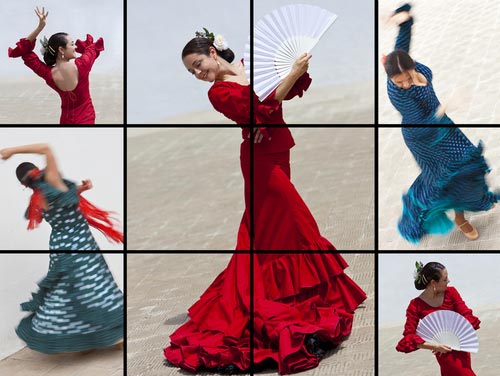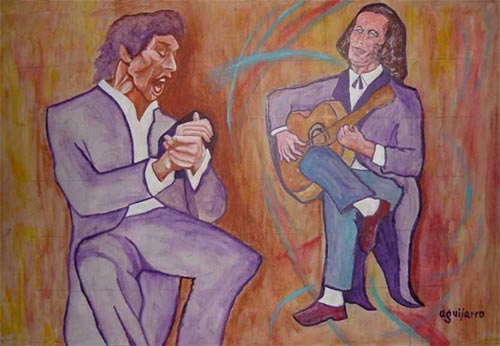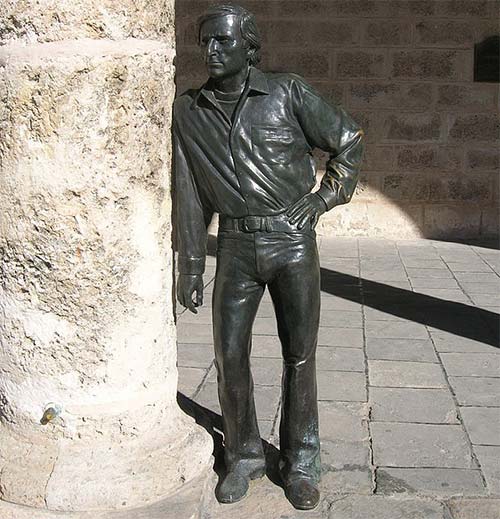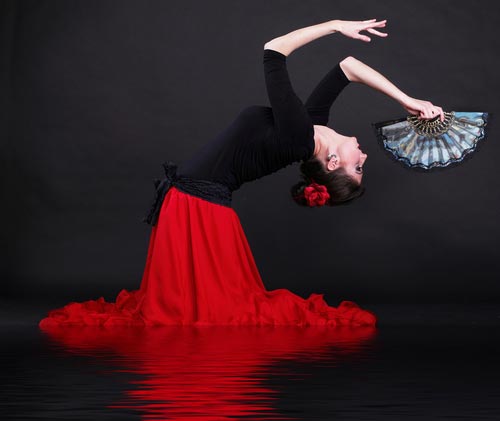Flamenco is a marvelous and passionate dance. Full of spellbinding movements and captivating melodies, flamenco transmits the truth of its culture through the most intense and fascinating way. If you…


Flamenco is a marvelous and passionate dance. Full of spellbinding movements and captivating melodies, flamenco transmits the truth of its culture through the most intense and fascinating way. If you…

In the history of Flamenco, there have been several remarkable artists that were and still are symbols and references for new generations. The guitarist Paco de Lucía and the singer…

Flamenco music is very rich and vibrant. Its history is very interesting since it has evolved into an extremely vast and complete genre of music. Flamenco music started with the…
Flamenco bailaores are considered percussionists that play music with their feet while they dance. Their instrument is the special flamenco footwear that has nails in the soles of the heels and the toes. The metal material of the nails makes that particular sound when bailaores hit the wood floor.

©Claire
There are several kinds of heels that the bailaor will choose depending on what they find more comfortable: the traditional heel, the cubano and the carrete or garrucha. The height of the heel can vary from 2 cm. to 7 cm. Nowadays, flamenco shoe producers offer a wide variety of colors and fabrics for the shoes.
There are many stores in Madrid where you can find them: Gallardo, Senovilla, Artefyl, Luna Flamenca and Menkes located in the center of the city.
We kindly invite you to go to a tablao flamenco where you will see bailaores perform. And, to live the night in the very Spanish style, order some tapas and some wine! You’ll definitely have fun!
Most of the times, when people hear “Sevillanas” the first thing that comes to their minds is “Flamenco,” or the other way around. However, although the dividing line is quite slight, there is actually a difference between them. Sevillanas are part of the folklore originated in Seville, while Flamenco originated in the region of Andalusia and has a very wide and deep history.

© mrskyce
Sellivanas are usually danced in couples and in series of four. The four of them have the same musical structure and although they can be danced differently, there are always specific moments when the dancers do certain steps.
On the other hand, Flamenco comprises several palos and the music, compass, structure and essence changes from one palo to another. Nonetheless, Sevillanas are now part of the Flamenco palos belonging to the Andalusian folklore. In fact, nowadays, most of the students of Flamenco also learn Sevillanas.
All in all, in spite of the distinction of their origins, Sevillanas and Flamenco are closely related to each other.

Each bailaor understands and expresses differently the art of flamenco. There are several worldwide known flamenco bailaores and each of them has their particular attributes and essential qualities that make…

“While I dance I cannot judge, I cannot hate, I cannot separate myself from life. When I dance I can only be joyful and whole. This is why I dance.”…

Definitely, the best way to enjoy flamenco in Madrid is going to a traditional tablao and watching a flamenco show while eating some typical Spanish food. If you have seen…

Flamenco is a folk music and dance typical of the Andalusia region in Spain. A flamenco show implicated four different expression, singing called cante, guitar playing called toque, dancing and…

We have already talked about the origins and the dresses of flamenco in Madrid, but there are many other things that will impress you. Some of them are the instruments…